This project, led by Biology Professor Ann Fraser, aims to promote insect pollinator populations by planting a diverse mix of native plants which provide these insects with food and nesting resources. Native wildflower planting will take place on the Powerline Trail because of its open accessibility for maintenance and pollination. Promoting native Michigan flora is essential for the health of the ecosystem in the Arboretum, and the sustainability of native bee populations.
Pollinator populations are declining globally, so this local action is an important step in supporting pollinators everywhere.
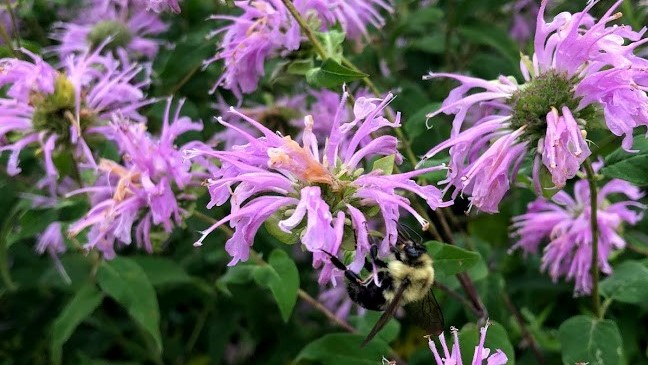
Site Preparation
Beginning in the spring of 2019, Kalamazoo College has removed non native and invasive plants through mowing, selective weeding, and herbicide application on the Powerline Trail. These plants include non-native woody and herbaceous plants along with invasive like Garlic Mustard and Spotted Knapweed. Thinning these populations gives more space for the native plants to flourish.
Planting Seeds for Further Research
Seeds of a diverse mix of native plants will be planted in December of 2020 and are expected to yield new growth during the spring of 2021. These plants and visiting pollinators will be recorded and monitored by K throughout the summer of 2021. Fraser’s lab performed various methods of data collection during the summer of 2019 which will be continued and applied in the coming years.
Pollination 101
Bees pursue nutrient dense food sources like nectar and pollen on flowers. While foraging, bees collect pollen on their body hair and transfer the granules from flower to flower. The pollen contains genetic material from the flower, and during the process of pollination the genetic material fertilizes an egg within another flower to develop seeds.
Why Native Plants?
Native plants are adapted to the environment of southwest Michigan because they have evolved to live here over thousands of years. Plants that are already adapted to live in Michigan require less water and outside assistance to thrive. Native pollinators have co evolved a mutualistic relationship with native plants which allows for better plant growth and pollinator health.
Why Are Native Bees Important?
Native bees provide pollination services to natural ecosystems and serve important roles in agricultural ecosystems. Supporting populations of native bees is vitally important especially during this time of honey bee decline. The native bees are adapted to our local climate and local plants, so they can pollinate even more effectively than honey bees.
Ongoing Research
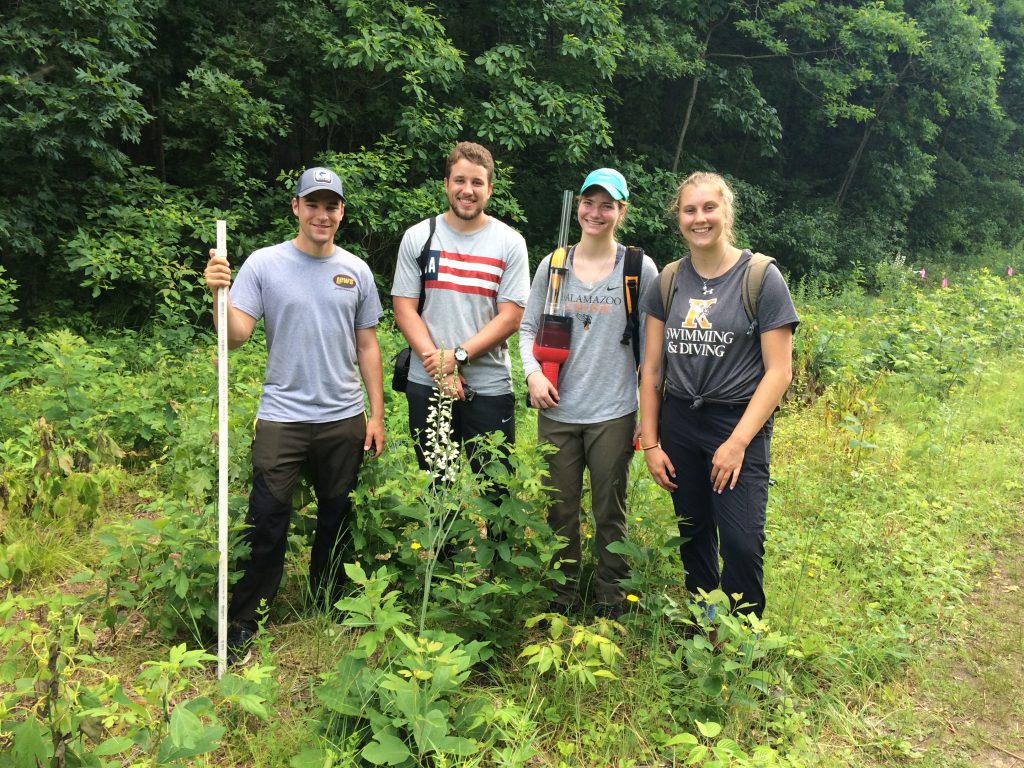
Trevor Rigney ’20, Niko Nickson ’21, Amy Cazier ’20, Nicki Bailey ’21.
Beginning in 2008, Ann Fraser’s lab has been researching native bees with a focus on the Lillian Anderson Arboretum. During the summer of 2019, Fraser’s lab has increased focus on plant and pollinator interactions along with nesting sites. The areas on either side of the Powerline Trail have also been closely monitored through the spring and summer of 2019 by students of Ann Fraser who are conducting research for their Senior Individualized Projects. Amy Cazier ’20 is conducting a plant survey of the biodiversity of wildflowers along the trail, and observing plant and pollinator interactions. Trevor Rigney ’20 constructed bee nests which are placed every 25 meters along the trail and monitored weekly. Both bee bowls and blue vane traps are set up in Old Field, Meadow Run, and along the Powerline to collect pollinators for identification. These identifications help measure the biodiversity and abundance of insect pollinators in the Arb.
Wildflower Surveys
It is important to survey the current plant populations along the Powerline to understand the existing biodiversity of the area. Overabundant and rare species are recorded and given due attention. Visiting pollinators are observed and identified by their morphology and flower preference.
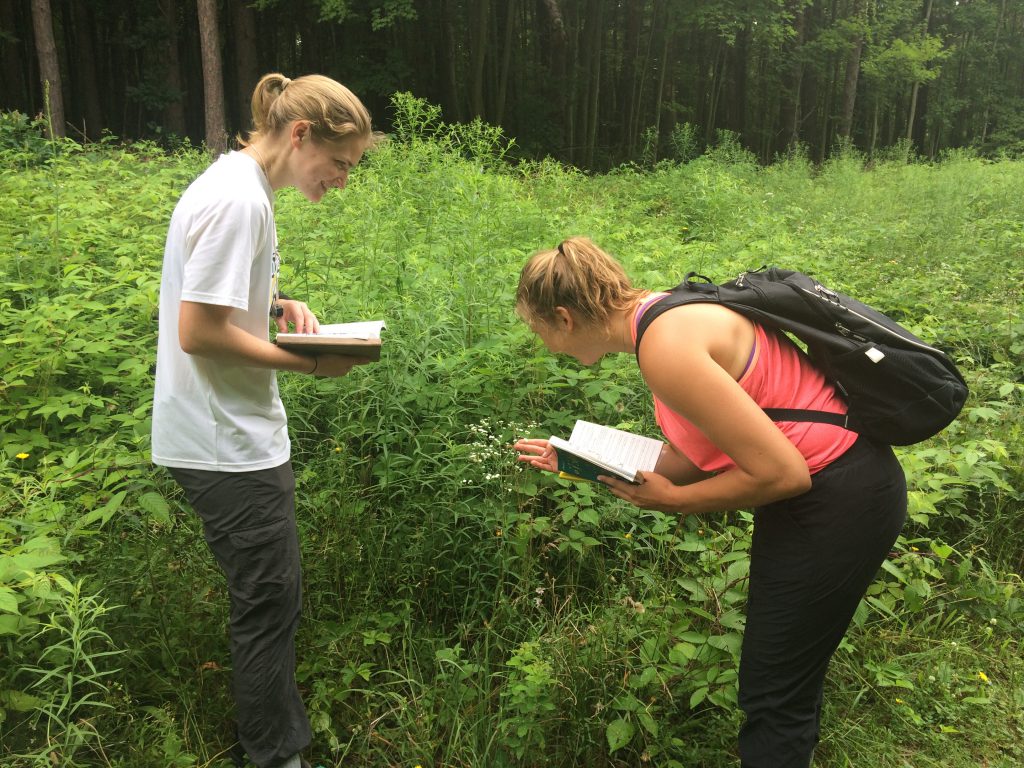

Collection
There are several methods of capturing pollinators for identification and study, including the blue vane trap, bee bowls, and a bug vacuum. For the blue vane trap, pollinators are attracted to a brightly colored plate, collide with it, and slide into the trap below filled with soapy water. This is a way to collect larger bees which will not fall into bee bowls, and these traps stay out for two to three days.
Bee bowls are small bowls of soapy water which attract pollinators with their bright coloration. The pollinator falls into the bowl, and the samples are collected at the end of one day. Smaller insects are often found in bee bowls.
The bee vacuum is a more specialized method of collection. The gentle suction captures any pollinators that visit flowers of high interest or conservation value during 15 minute surveys. This method is highly efficient for understanding direct correlations between specific species of flowers and pollinators.
Nesting
We are providing nesting resources to observe the behavioral nesting habits of native bees in the Arboretum. Native bees are solitary and nest in holes in the ground or hollow reeds. Artificially constructed bee nests consist of hollow reeds or cardboard tubing bundled together in PVC pipe pieces with one end sealed. The tubing provides space for small solitary bees to house their pollen and egg cells, while protecting themselves. When the bee has filled the tube with egg cells it is plugged up with mud on the open end. The tubes can be monitored with a flashlight in the field, but they eventually are photographed with x-rays to see the cells within.

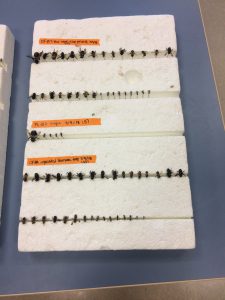
Observation and Identification
After collection, the bees are brought back to the lab, washed and dried, then pinned for identification by genus and species. The Discover Life website identification key is used to decide what each specimen is, and eventually the insects are sent to a specialist for confirmed identification.
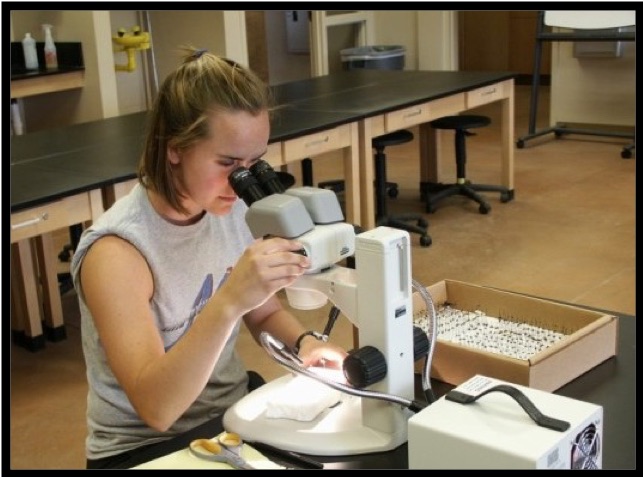
Citizen Science
The continuation of this project relies on the participation of interested community members for citizen science data collection. The system for citizen input was developed in the summer of 2019 focusing on photographing bumblebees. The Southwest Michigan Bee Watch program was launched in summer 2020.
Rather than having to collect pollinators with traps, citizens will send bumblebee photos to an online database and attempt to identify them with an online identification tool. The identifications will be checked by an expert, and the amount of data will be greatly increased because of the larger participant pool. This program will allow more bees to be identified while living, and hopefully increase community interest and engagement in the diversity of native bees.


In addition to community engagement through the citizen science bumblebee project, educational signs will be placed in the Arboretum emphasizing the importance of conserving native bees and wildflowers. Nicki Bailey ’21 is drawing illustrations for the signs to display common plant and pollinator interactions on native flowers, and detailed anatomy of native bees. The signs will inform the public about the variety of native bees in our area, and how they can support pollinators in their own homes. To promote pollinators, you can:
- Plant native wildflowers
- Provide nesting sites
- Avoid using pesticides
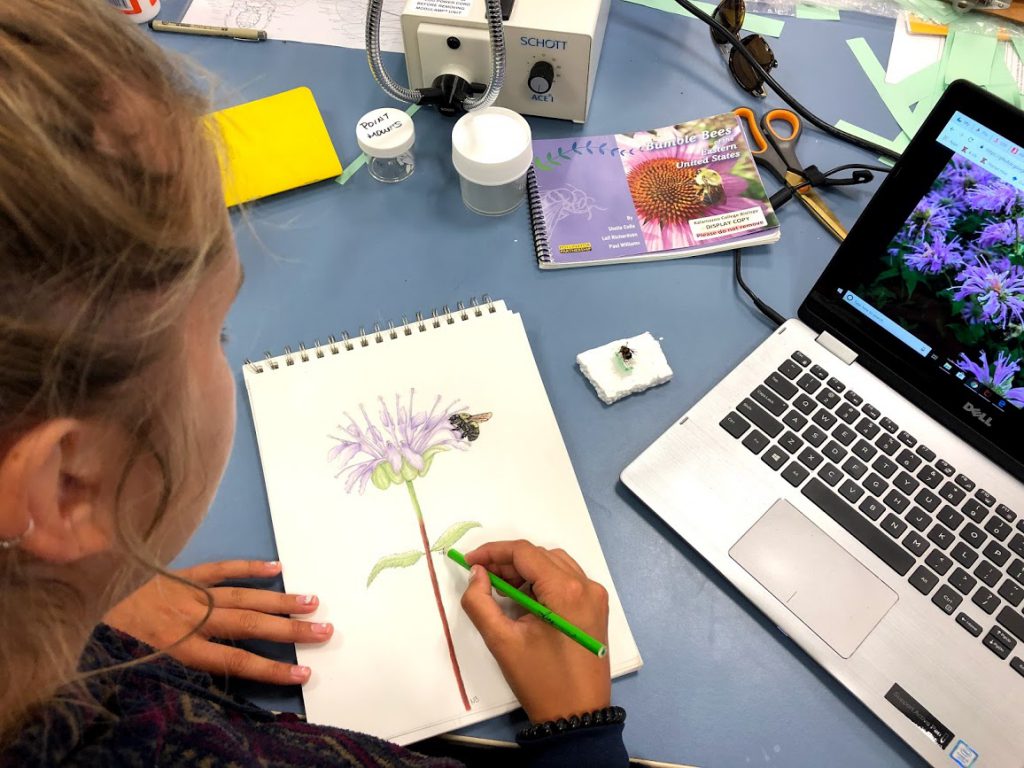
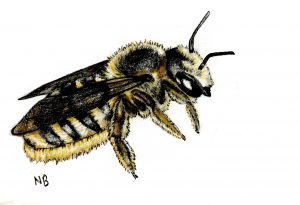
© Nicki Bailey
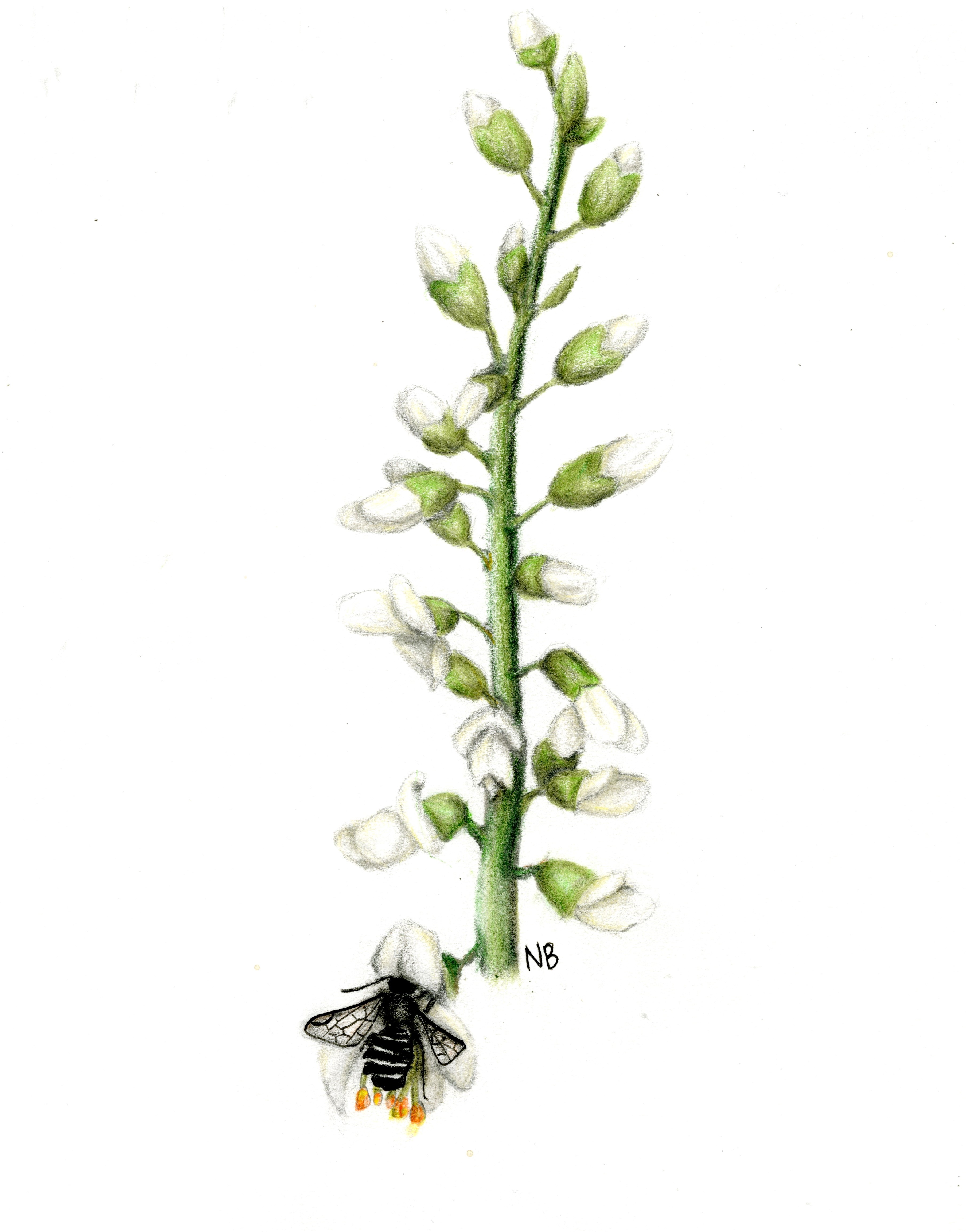
© Nicki Bailey
Community Involvement
Nicki constructed this page to excite the community and broaden public access to information about this research. There are many other pollinators besides honey bees that are essential for pollination of crops and wildflowers. By promoting the diversity of native bees, we support a healthy ecosystem of native wildflower and plant growth. We believe that our small effort is an important step to combat bee declines and support native plants and pollinators everywhere.
Actively check this page for more information about upcoming dates for work days and opportunities to engage in citizen science work.
Questions or comments? Email kbees@kzoo.edu
